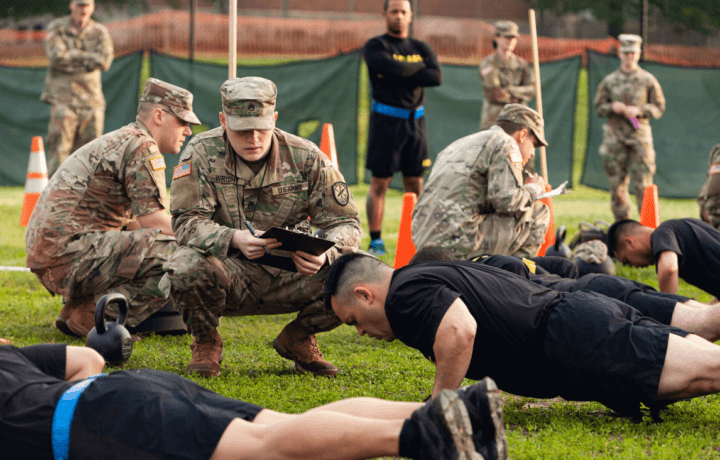In April, the United States Army announced it was on track to meet its recruitment goal of 55,000 new soldiers for fiscal year 2024 (FY24), following years of struggling to sign recruits. For 2023, the service fell short of the 65,000 soldiers it wanted, recruiting just 54,000 individuals.
For FY24, the Army lowered the bar a bit – setting it at 55,000 recruits, reflecting changes to the service and the way warfighters could fight future conflicts. The U.S. Army had approximately 445,000 active duty personnel heading into FY24.
Basic Combat Training Expanded
The brighter recruiting numbers will result in the service expanding its basic combat training (BCT), and that will include new units in Oklahoma and Missouri, which will be charged with training as many as 4,000 recruits annually, The Associated Press first reported earlier this month.
Secretary of the Army Christine Wormuth said she was happy with last year’s recruiting transformation efforts, which have put the service “on track to make this year’s recruiting mission, with thousands awaiting basic training” over the next year. The two new locations will allow the Army to quickly train the recruits and into new quickly.
Brig. Gen. Jenn Walkawicz, head of operations for the Army’s Training and Doctrine Command, also told the news service that the two new training companies will be located at Fort Sill, OK, and two more at Fort Leonard Wood, MO.
Both of those bases already have the infrastructure, including barracks to accommodate the new training companies, and each could be expanded more should the need arise. The other benefit of using Fort Sill and Fort Leonard Wood is that the costs of the expansion can be mitigated as the equipment and rooms are already available. The only necessary additions are maintenance, food, and staffing.
The BCT remains the primary recruit training program for the U.S. Army, as well as the U.S. Army Reserve and Army National Guard. That training is already provided at Fort Sill and Fort Leonard Wood, as well as at Fort Jackson, SC. In addition, some trainees may receive their BCT along with advanced individual training (AIT) at a One Station Unit Training (OSUT).
The U.S. Army currently maintains 151 training companies with most being located at Fort Jackson and Fort Moore, GA, in addition to the 15 training companies assigned to the prep course. As a result of the Army’s recruiting struggles, the number of individuals going through the program declined in recent years.
Not Easy, Not Meant to Be
To meet recruiting goals, the United States Army – as well as the U.S. Navy – has had to relax some of the regulations on past drug use, and the presence of tattoos, while it also created a “Future Soldier Prep Course” as a pilot program in August 2022 to increase the quality of individuals entering basic training.
The program, which offers lower-performing recruits up to 90 days of academic or fitness instruction, was further expanded in January 2023, helping potential recruits overcome those academic and physical fitness barriers to service. The Army tasked 15 training companies to its prep courses.
Such pre-training before basic training even begins may be necessary for a generation that was born with mobile phones practically permanently attached to their hands, and who were forced to take part in remote learning during the pandemic.
This is because while BTC is about learning the basics, it doesn’t translate to easy.
As the United States Army noted, “Basic Combat Training is not easy, in fact, the 10 weeks may be the toughest thing the Soldiers will accomplish during their lives. Basic Combat Training is challenging and transforms civilian volunteers into well-trained, disciplined, physically fit, and motivated Soldiers who understand the importance of teamwork. After they graduate, trainees will be well versed in the seven Army Values of Loyalty, Duty, Respect, Selfless Service, Honor, Integrity and Personal Courage.”
BTC is further meant to “transform” civilians into soldiers and includes new and often physically demanding skills. The training has also expanded as the Army continues to transition and prepare its soldiers for a potential fight with near-peer adversaries such as China or Russia after two decades focused on the Global War on Terror (GWoT).



